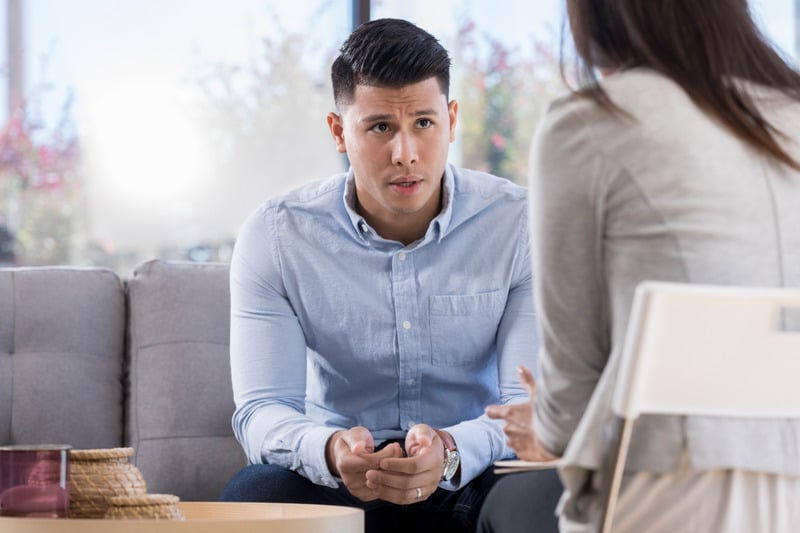

Train Your Brain for Positivity
Train Your Brain for Positivity
I have been in the helping professions officially since 1982, but I really started in 5th grade. I knew I was going to be helping people in some form or another from the time I was ten. My classmates would call me with their problems and I loved helping out. Of course, I had no idea what I was doing and I’m sure I doled out advice much like Lucy on the Charley Brown cartoons.
Today, I like to think I’m a bit more savvy and I have studied a lot in my field. The month of October is both “Positive Attitude Month” and the 13th is known as “Train Your Brain Day.” I thought I would combine the two in sharing what I’m learned over the years as a counselor and coach.
Neuroscience has discovered that the human brain is hardwired for negativity. This is a very good thing if you are in a life-or-death situation, such as a soldier in combat, but it no longer serves us in our every day generally safe environments. That instinct that helps you notice when things are out of place, indicating something may be about to happen that’s dangerous, is the same instinct that has you focusing on the pain in your life, the things you can’t do, and the things you don’t have. This is particularly true during the pandemic. Life is hard and challenging.
And yet, life is also beautiful and wonderful. There is always balance; it’s a law of the universe. Events that carry negativity have an equal amount of positivity. However, you’ll never see the positive, at least not for a long time, because you don’t know it’s there. When we experience emotional and psychological pain, our hardwiring has us zeroing in on the pain. What do you think this leads to? It can create depression, anger, anxiety and a barrage of physical symptoms without a medical cause.
What would happen if you began to realize that painful events have equal positivity? We get the benefit of seeing the advantages and benefits in hindsight, but wouldn’t it be so much better if we could recognize the positives early on to mitigate some of that pain? You can train your brain to do that. Your brain is like a muscle. You need to strengthen the response for the positive. That doesn’t mean you lost the instinct for negativity. That will still happen but almost instantaneously, you can remind yourself that no matter how painful the situation is, there is positive associated with it that you just can’t see in the moment.
Recognizing there is positive, helps to mitigate the pain. If you aren’t ready to seek out the positive, you don’t have to. You can sit in the mental and emotional pain of the situation for as long as you want to, but it’s challenging to do that once you know you hold the key to feeling better.
I began this journey of balancing the negative with the positive when my husband was dying. That was extremely challenging and took me a long time to find the balance. I started with just two things and over time, I was able to uncover more. Now, I am no longer hostage to that pain because I am content with the balance.
That doesn’t mean I wouldn’t snap my fingers and get my husband back if that were possible. The hard part is that we don’t get to choose the painful things that happen to us. Sometimes, circumstances just happen. I had no control over my husband dying, but I do get to make meaning of it and mine my life for the benefits and advantages of that painful experience.
I use this process through all the painful experiences in my life, and I’ve had a few. Just to name some so you now I’ve not led a charmed life, my youngest son served two tours in Iraq, an eight-year relationship ended, and I broke both my ankles in a hot air balloon accident and spent two months in a wheelchair that was supposed to be four months. The doctors attributed my excellent recovery to my mental attitude. On that occasion, the moment we landed, I said to myself, “Well, Kim, now you have the opportunity to practice what you preach.” It didn’t take me long to find the positive in that situation and I believe my positivity had an effect on many people during that time.
Most recently, I was able to remain positive when my computer lost nine hours of work I had put in one day. Not one word was saved! I definitely felt that pain, but I also opened myself up to the possibility that perhaps when I created it again, it would be even better.
What I’m talking about isn’t being a Polly Anna optimist. I don’t walk around all day smiling and acting like life is grand. Life is hard and it’s wonderful and amazing. I feel the pain; but I know that simultaneously, there is GLOW—gifts, lessons, opportunities and wisdom. I choose to focus on the GLOW, so the pain doesn’t overwhelm me.
Some tips I have for doing so are:
- Maintain a gratitude practice.
- Focus on what you can do, not on what you can’t.
- Focus on what you have, not what you don’t.
- Remain flexible.
- Be a lifetime learner.
- Stay alert for opportunities to help others who are experiencing what you’ve already conquered.
- Love yourself through it all.
Training your brain to see the positive in the negative won’t make you deliriously happy, but it will help you be content with the balance and contentedness is a beautiful thing.
Recent Post



I am in Control

Truth Seekers

The Head, Heart and Hands of Mental Freedom



